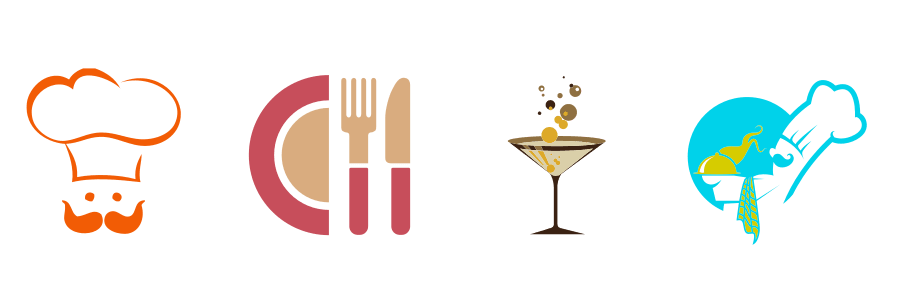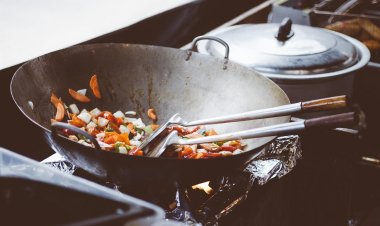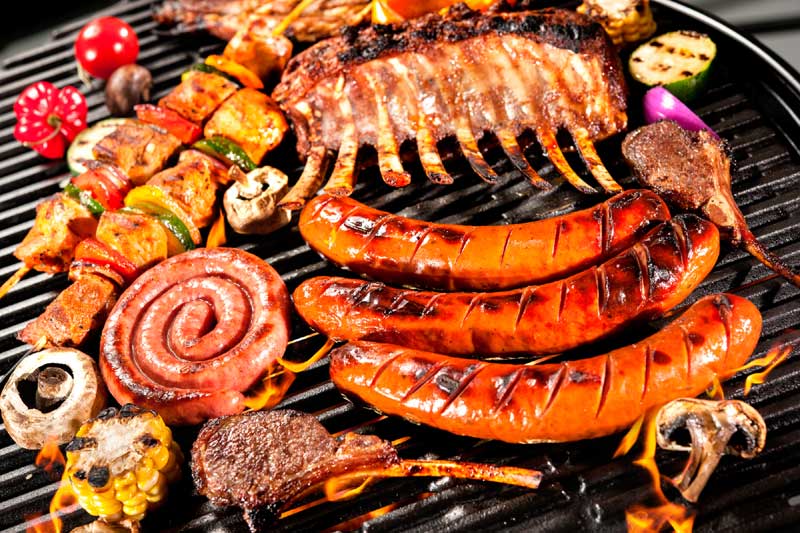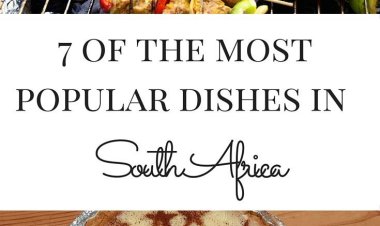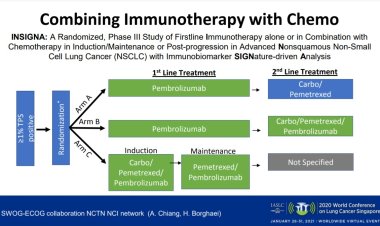The Essential Food Blogging Courses for Aspiring Bloggers
The Essential Food Blogging Courses for Aspiring Bloggers

Food blogging is the most profitable blogging niche, according to a study carried out by RankIQ in 2022. People love looking for new recipes and culinary inspiration, making food an ideal topic choice if you’re looking to enter the blogging world. But it’s important to remember that the standards within this niche are very high. Aspiring food bloggers need to keep learning and growing if they want to get noticed and grow their blogs.
Food blogging is incredibly competitive, and bloggers need to wear a number of hats. As a food blogger, you have to build multiple skills – it’s not enough just to be a good cook. This is something a lot of bloggers struggle with. You might not have the photography skills, technical ability, or knowledge of marketing and SEO to make your blog work.
To help you diversify your skillset as a food blogger, we’ve gathered a list of top food blogging courses that are suitable for everyone, from beginners to seasoned bloggers.
Critical skills every food blogger should have
Food bloggers need to build a toolbox of skills they can draw on. To showcase your recipes and ideas properly, you have to be able to present them and promote them. Here are some of the key skills you should have under your belt.
Photography
High-quality images draw in your reader. From how to use your food photography camera to how to set the right angles, working on your photography skills will help you go far. You need to understand lighting, how to style a shot, and how to edit photos, too.
Website skills
Building and maintaining a website should be in your skill set. WordPress is the most blogger-friendly CMS, with themes designed for food bloggers.
“WordPress proves to be the top choice for food bloggers due to its straightforward interface, rich theme and plugin options, and strong community backing. The user-friendly dashboard allows bloggers to easily manage content without the need for intricate coding. The WYSIWYG editor simplifies the content creation process, freeing bloggers from technical complexities and letting them concentrate on their culinary content. In essence, WordPress streamlines the blogging experience, making it an accessible platform for those entering the world of food blogging.”
Birthe VandermeerenCofounder of Bootstrapped Ventures
SEO
You don’t need to be an SEO expert, but every food blogger should have a basic understanding of Search Engine Optimization. Knowing the essentials will help you increase the visibility of your blog and get more eyes on your recipes.
Digital marketing
Related to SEO, other digital marketing skills are sure to come in handy, too. They will allow you to understand how to drive traffic and build an audience. You can also gain a better understanding of different ways to monetize your blog. Focus on skills such as analytics, social media, and email marketing.
Videography
Learning videography is optional, but it’s a great choice if you want to take your content to the next level. People love visual, instructional content that they can follow step-by-step.
Top food blogging courses worth your investment
Taking a course is the ideal way to learn some of the essential skills you need for food blogging. We have collected some of the top courses that will help you learn some or even all of the key skills above. Whether you’re a beginner or an experienced food blogger who wants to improve your skills, there’s something for everyone on this list.
Food Blogger Pro

Food Blogger Pro is a subscription membership, giving you access to more than 80 courses, from ‘Setting Up Your Food Blog’ to ‘Blogging as a Business’. Created by the bloggers behind Pinch of Yum, it also offers access to monthly live membership calls and a community of bloggers. You can get discounts on blogging tools and gear, too.
At $350 per year or $99 per quarter, it’s definitely not the cheapest option. The price makes it potentially better-suited to intermediate bloggers who have already got their blogs to a certain point and want to go further. You can try it out for 60 days to see if it’s for you, and there’s no risk with their 60-day money-back guarantee.
Food Blogging for Beginners

This course on How to Become a Food Blogger course offers you 6+ hours of video lessons, as well as quizzes and assignments. It comes from Confessions of a Food Blogger and covers a range of important topics. You will learn basic and more advanced SEO, how to set up and run a Pinterest account, how to embed YouTube videos, and much more.
The course costs $349 as a one-time payment or can be split into 4x $87.25 payments. It specifically focuses on using WordPress, covering various topics over 26 modules. You’ll learn how to do WP essentials, such as installing plugins and widgets to enhance your blog and improve search engine optimization.
Food Blogging Guide

If you’re looking for a completely free course, this Food Blogging Guide is perfect for beginners. It takes you through all the steps required to set up your blog with WordPress, from choosing the right domain to adding content. It also covers more advanced topics, including how to do keyword research for your good blog and how to monetize your blog. The course is presented as both text and video tutorials, so you have a range of easily digestible content. Take yourself from a complete newbie to someone who feels more confident in what they’re doing.
How to Create an Engaging Food Blog Post

Visual learners will enjoy this video course, with instructions that are easy to follow. Learn how to create an engaging food blog post on Skillshare. This course is ideal for beginners, especially if you want to focus on the specifics of creating a blog post. All of the technical stuff is important, but it won’t help much if you can’t produce good content.
To access this course, you need to sign up for Skillshare. It’s free for the first 7 days of your membership, during which time you could complete the 8 lessons in the course if you don’t want to pay.
Editing with Photoshop

Photography skills are important, but so are photo editing skills. If you want to improve your editing skills, the Editing with Photoshop course from Click Start Club is for you. Although it’s not specific to food blogging, it’s created by the blogger behind The Bewitchen Kitchen, so the examples are all food-based. At $94.80, it’s on the more affordable end compared to some other courses, and it focuses on one key skill that all food bloggers should learn. You can make your photos a lot more professional with some smart editing skills.
Other tools you need for a successful food blog
As well as the right skills, you also need the right tools to grow a successful food blog. Of course, the most important thing for a food blogger is to have a blog itself. Without one, you’re not going to be able to do much.
WordPress is by far the best option for bloggers who want to make it in the food niche. It has a user-friendly interface, it’s highly customizable, and it has a fantastic range of plugins to enhance functionality. It’s great for beginners and people who are still learning too, thanks to its plentiful support and tutorials.
Choosing the right plugins can make all the difference for your WordPress food blog. WP Recipe Maker is a must-have for creating incredible food blog content. The plugin offers many features to enhance your blog’s content, helping to make it more reader-friendly and improve SEO. The template editor allows you to adjust default themes, matching your blog’s unique style. The edited template can then be used as the default so edits don’t need to be performed multiple times. Share buttons give your readers the option of easily sharing any recipe to social media or via email or text message.

Not only is recipe creation with WP Recipe Maker a breeze, but it also automatically includes all recipe details in the recipe metadata, giving you a vital SEO boost. This means your recipes can show up as rich snippets and rich cards in Google search results, boosting your blog’s visibility. When people search for recipes, yours could appear right at the top of the page.
Hoping to monetize your blog? WP Recipe Maker can help with that too. If you are signed up with Amazon affiliates, you can link to the equipment you’re using with the affiliate link to equipment option. When someone buys through your link, you’ll get a small commission.
Take the next step: Enroll and elevate your food blog
Are you ready to take the next step in your food blogging journey? Signing up for a food blogging course gives you the chance to build essential skills for achieving success.
The courses listed in this guide cover diverse topics that will help you tackle the issues that face you when trying to grow your food blog. Think about which skills you feel you need to work on and choose a course that will help you the most. If you want to work on one specific skill, there are options for that. Alternatively, other course options cover a broad range of skills with lots of material to learn from.
You don’t have to be a beginner to benefit from these courses. Even if your blog is up and running, you can benefit from continuing to build your skills. Identify where you want to improve to get the most out of the course you choose. When you invest your time, and sometimes your money, into a good course on food blogging, it can really pay off. Food blogging is a profitable niche, so you could start to see some great returns after working on your skills. Even if you’re running your blog as a hobby rather than setting out to make money, you can get more eyes on your content.
Choose an easy way to instantly give your food blog a boost by installing the WP Recipe Maker plugin on your WordPress blog. The features you get make it simple to create a food blog that’s appealing to readers and search engines. New bloggers and experienced bloggers alike can benefit from taking control of their food blog content.
